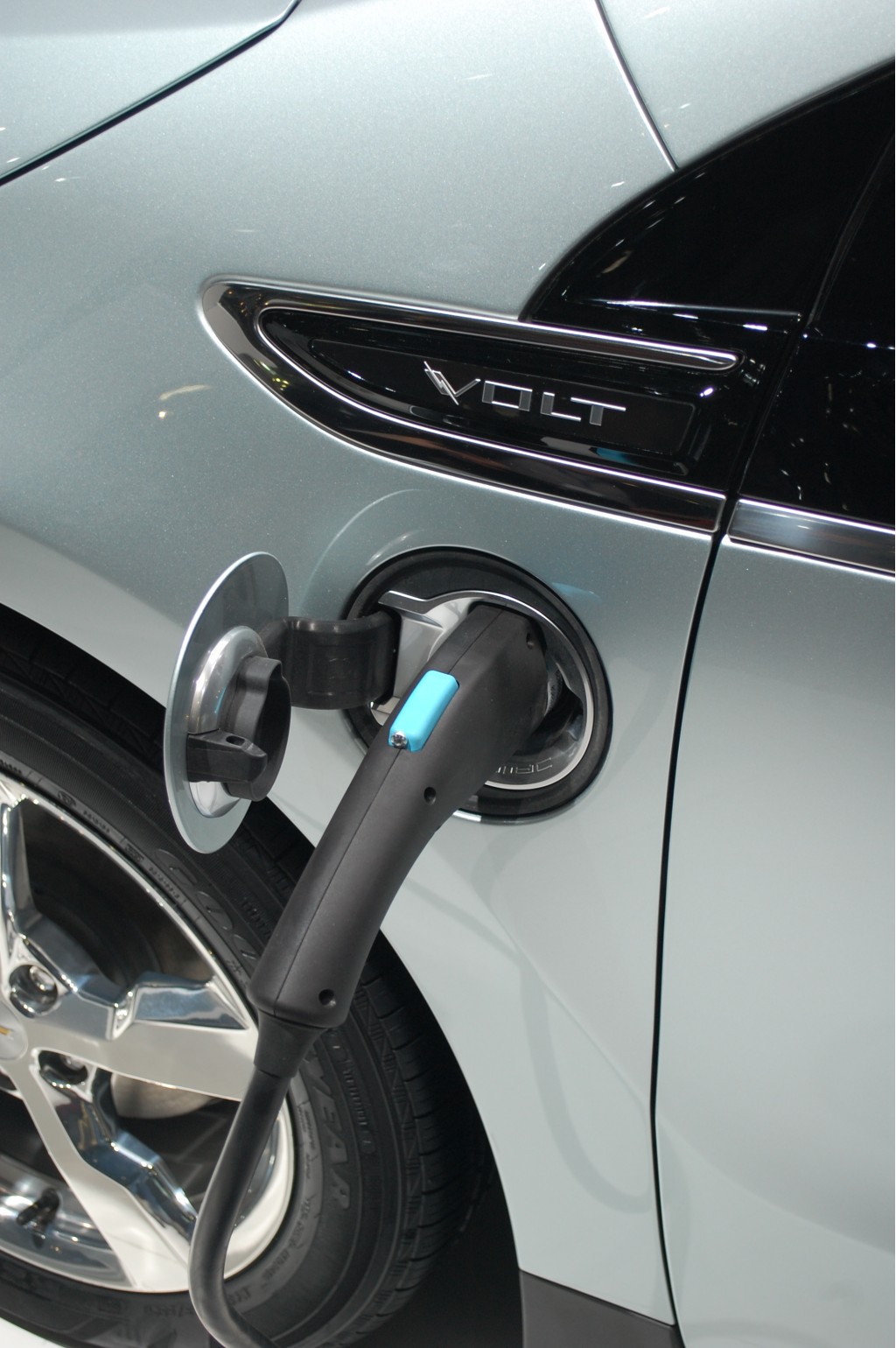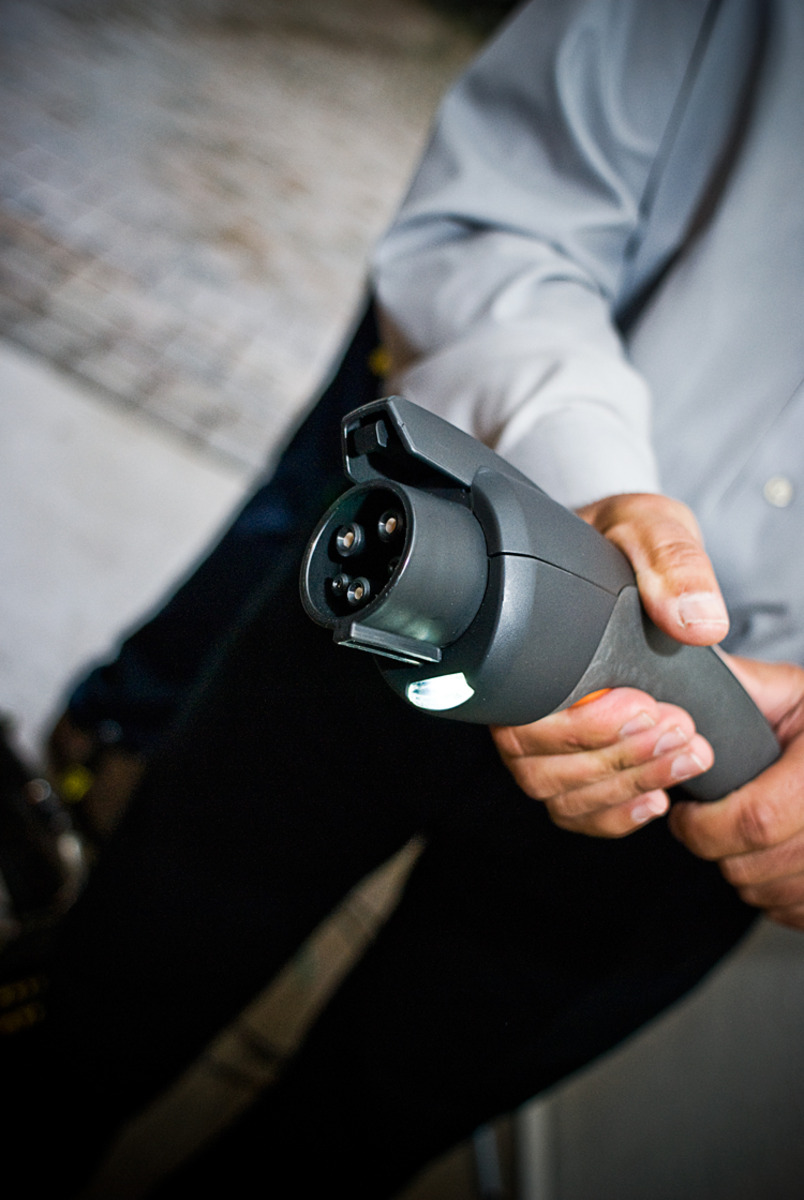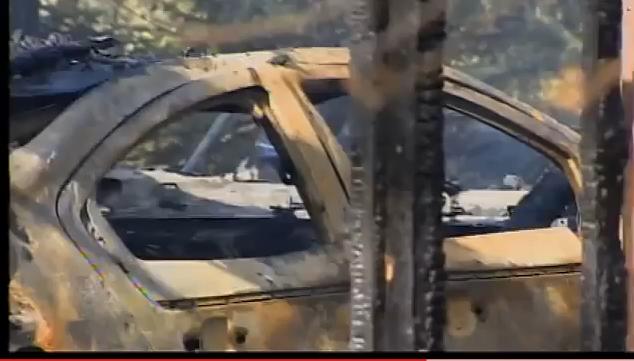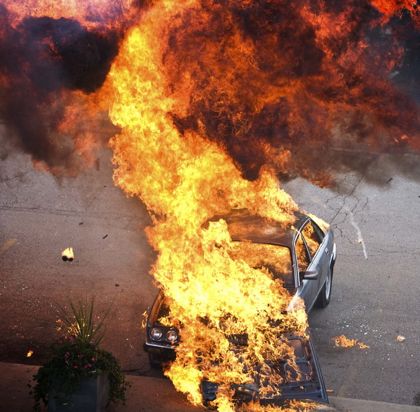Preliminary conclusions from the investigation into a Mooresville, North Carolina, house fire that destroyed a Chevrolet Volt indicate the fire did not start in the vehicle, but elsewhere, and progressed to engulf the electric car.
Iredell County chief deputy fire marshal Garland Cloer told GreenCarReports in an exclusive interview that, "the source of ignition seems to be from outside the area of the vehicles."
Shared preliminary conclusion
Cloer noted that his conclusion was preliminary, but he noted that his assessment was shared by "some of the other investigators" on the scene, who included representatives from Nissan, Chevrolet, Siemens, Duke Energy, and the homeowner's insurance company.
The 2011 Chevrolet Volt was plugged into a Siemens 240-Volt recharging station in the garage at the time of the fire. Much media coverage focused on the possibility that the extended-range electric car or its charging system could be at fault.
Two cars and a lot more
The North Carolina fire started in the three-bay garage of the house on Cades Cove Lane in Mooresville. That structure contained the Volt in the first bay, a 2007 Nissan Armada full-size sport-utility vehicle in the second bay, and a collection of miscellaneous objects in the third bay.

2011 Chevrolet Volt charging port
Those objects included childrens' electric plug-in cars, various stored household items, gasoline, and other hazardous materials.
While large, the size of the garage was appropriate for the $1.5 million house, which covered a total of 5,700 square feet, according to Cloer. Local news reports placed the total damage to the house and garage at $800,000.
Fire progressed "to the vehicles"
"Fires take certain patterns," Cloer said, often a "V-shaped pattern that spreads out from the point of origin" that can be determined from the points where the flames have burned most intensely.
The fire pattern seen in this case "seems to have progressed to the vehicles" from elsewhere in the garage, Cloer said, which would indicate that neither the Volt nor the Armada was the source of ignition.

2011 Chevrolet Volt 240V charging station
Second-story room collapses into garage
The fire erupted on Sunday, October 30, but after the fire was extinguished and the scene was controlled, it took the county team several days to assess the building and remove debris to reach the ground floor of the garage.
The structure included not only the three bays but a "bonus room" with dormer windows above. The floor of that second-story room had collapsed into the garage, Cloer said, requiring its roof and floor structure to be cut into pieces and removed once they had been inspected and deemed not relevant to the investigation.
After that, the unstable front wall had to be removed as well before the various team members could safely gain access to the ground floor of the former garage.
Close inspection and analysis of the three bays started in earnest this past Tuesday with GM and Siemens on hand. A Nissan representative arrived Wednesday.
Volt not gutted
Once the Chevrolet Volt had been stabilized by GM technicians and removed, the team inspected the damage to the car.
In looking at vehicles that have caught fire, Cloer said, "seats, carpets, even rubber hoses, are not usually left intact" when a fire starts inside a car. But that was what they found in the Volt, along with a pattern that suggested the fire that engulfed it spread from the front to the rear of the car.

2011 Chevrolet Volt destroyed in Barkhamsted, CT, garage fire; image from WTNH News 8 report
The T-shaped lithium-ion battery pack located in the tunnel and under the rear seat "received most of its damage near the top of the T," he said, which led the team to believe that occurred when the fuel in the car's gasoline tank ignited.
Black box rescued
GM was able to remove the Volt's vehicle interface control module, or black box, and will use it to determine how much fuel was in the tank at the time of the fire--as well as the battery state of charge, the charging behavior up to the point of the fire, and other behavioral data that might indicate any irregularity in operation.
The next step for the investigation team is to "eliminate sources as best can, with the most knowledgeable people we can get," including representatives from the various corporations whose products were consumed by the blaze.

Car Fire
As it stands now, the "area of origin" of the fire is the garage, but the "point of origin" has yet to be determined. Investigators will continue to inspect items in the garage.
If they come up short, they may have to resort to sifting through the dirt, ash, debris, and other material from the garage floor, Cloer said.
All of that material was gathered up and saved in plastic bins, with its position in the structure identified according to a grid the investigators set up before removing anything.
Conclusion still preliminary
Cloer stressed repeatedly that his assessment was preliminary, characterizing it at one point as a "pure unscientific observation" based on his professional experience. Among other information, he is awaiting data from the charging systems in both the Volt and the Siemens charging station.
"I've been caught by surprise before," he said, and "there's always something I haven't seen" in fire investigations.
But based on investigators' work thus far, it would appear there's a substantial likelihood that the Volt was not the source of the fire.
Three reported fires (and one wreck)
The first reported fire involving a Volt was in April, occurring in a Barkhamsted, Connecticut, garage that also housed a Suzuki Samurai converted to a battery electric vehicle. In that case, the local fire marshal's report concluded the Volt had nothing to do with the cause of the fire.
Following the second fire, in Mooresville, a third instance came to light last week. In that case, the battery pack of a Volt wrecked in a National Highway Traffic Safety Administration crash test caught fire three months after the test. The NHTSA had apparently not followed GM's procedures for deactivating the battery pack after an accident.

2011 Chevrolet Volt destroyed in Barkhamsted, CT, garage fire; image from WTNH News 8 report
(For the record, a Chevrolet Volt was also destroyed late last month in a highway crash with a bus. Its occupants were not seriously injured.)
Charging ban not lifted
Thus far, Duke Energy, the local electric utility, is maintaining its advice that electric-car owners stop using their charging stations until the company decides those devices are safe.
County electrical inspectors told local media that at least 29 permits for charging stations had been issued in Iredell County.
AUTHOR'S NOTE: Our exclusive interview with Garland Cloer was facilitated by General Motors staff, who offered to put GreenCarReports in touch with the fire marshal. Based on our discussion, we believe Cloer's professional assessment is unbiased and would have been the same regardless of how the interview was arranged.
+++++++++++













